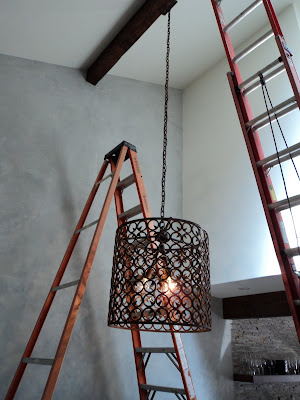
Allow me to rhapsodize a bit:
Over the last ten years, I've accrued a massive catalogue of fond memories in the Santa Barbara foothills, and if nostalgia isn't a mix of sweat, blood, and manic enthusiasm, then I don't know what it is. No matter what the circumstance, the acrid stench of California Bay and the roasted-sweet wafts of Central Coast sandstone throttle my attention at a nostrils notice. Seven Falls canyon was one of my first hiking experiences in Santa Barbara, and while the well-worn passages of this popular frat-boy den conjure scoffing amongst longtime locals, I still gape at the beauty of Mission Canyon, threading its way below the rugged spine of Cathedral Peak.
On one of my early sojourns up Seven Falls (just months after I bought my first harness and pair of shoes), I noticed a steep crack adorned by bolts. I was callow enough to jump on the route—proud from a recent 5.10a redpoint at Gibraltar—and begin what soon became a spirited exercise in physical futility. I was young, ego-engorged, and routinely successful at most endeavors in my sheltered world of collegiate meanderings. Leviticus began the beat-down that would simultaneously wrench my perspective aright, and plant seeds of belief that maybe, just maybe I could climb something hard some day. Years passed, I climbed all over the Western United States, failed on some routes, succeeded on others, battled disappointment, wrestled with motivation, fell out of climbing, and, inexorably, fell back in to it. Somewhere along the way, past the endless drivel of grade-debates, climbing magazine fodder, and self-imposed limitations that overly esoteric subcultures sometimes engender, I realized that—for me—climbing is wonderfully pure, and can be distilled in to three truths:
1) Climbing is hard
2) Climbing is fun
3) Climbing is fun when hard
Forget silly numbers and letters. Leviticus, the route that shut me down years ago, taught me that I sucked and then inspired me to not suck, was still there and, well, waiting. What the hell? It's a rock. It has holds. Why shouldn't I climb the shit out of it ? With the scouting help of Bernd Zeugswetter, my partner in local route-exploring and a truly gifted climber (not to mention the nicest guy for 300 miles in all directions), I re-approached Leviticus. After one or two short sessions, I unlocked the bottom crux, and with a mere torque of my pinky, thrutch of my shoulder, and an obscene, gravelly yell, I had one clean top-rope under my belt. In my opinion, if you can top-rope a route once, you can lead it. Thus, I decided that no matter how desperate my top-rope attempt felt, I would lead Leviticus as soon as possible.
Redpoint day included Justin Willet, Mr. burl himself, and belayer extraordinaire; Jake Novotny, a spirited and friggin' strong climber from Tahoe who perfectly embodies the unhindered spirit of someone new to climbing; and Robb Klassen, a supremely talented photographer—and, incidentally, barista at my favorite coffee shop. On the approach, Sunday afternoon heat seared our stroll up Tunnel Trail. The light, soon to be waning, fought tooth and nails in arrogant oranges, yellows, and sallow-white. As we descended in to Mission Creek, I noted every stone with perfect recall, and couldn't help but indulge myself the moment. What could be better than climbing a stunning route at the best time of day with a crowd of supportive friends? As I write this, I'm tempted to even more dire levels of saccharine, but I will stop here.
As far as the blow-by-blow?
Not much to tell. Really. It was over before it began, even though it really began ten years ago.






Jake takes a burn on top-rope.

Walking out. Damn good day.
























